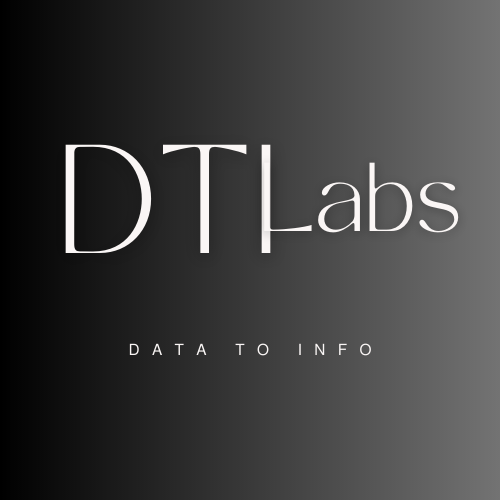Predictive modeling is a branch of data analytics that leverages historical data and statistical techniques to make predictions about future outcomes. In today’s data-driven world, organizations across various industries are utilizing predictive modeling to gain valuable insights, optimize decision-making, and improve overall efficiency. How beautiful it would be to receive information only about relevant products. Also how efficient would it be when you get all the required grocery items in first aisle. This article aims to provide an overview of the basics of predictive modeling, including its key concepts, techniques, and applications.

Understanding Predictive Modeling:
Predictive modeling involves the process of building a mathematical model using historical data, exploring patterns and relationships within the data, and using the model to predict future outcomes. It relies on the assumption that past patterns and trends can help anticipate future events or behaviors.
Data Collection and Preprocessing:
The first step in predictive modeling is collecting relevant data. This data can be sourced from various channels, such as customer databases, surveys, online platforms, or IoT devices. Once collected, the data needs to be preprocessed, which includes handling missing values, removing outliers, and transforming variables into a suitable format for analysis.
Exploratory Data Analysis (EDA):
EDA involves analyzing and visualizing the data to gain insights and identify patterns. Descriptive statistics, data visualization techniques, and correlation analysis are commonly used during EDA to uncover relationships and understand the data’s characteristics.
Feature Selection and Engineering:
Feature selection is the process of identifying the most relevant variables or features that contribute to the predictive model’s accuracy. Feature engineering involves creating new features or transforming existing ones to enhance the model’s performance. Techniques such as dimensionality reduction, domain knowledge, and statistical tests are applied in this stage.
Model Selection and Training:
Choosing an appropriate predictive model is crucial. Various algorithms, including linear regression, decision trees, random forests, support vector machines, and neural networks, can be employed based on the nature of the data and the prediction problem. The selected model is then trained using the historical data, where it learns the patterns and relationships between input features and target variables.
Model Evaluation:
Once the model is trained, it needs to be evaluated to assess its performance. Evaluation metrics such as accuracy, precision, recall, F1 score, and area under the curve (AUC) are used to measure the model’s predictive power. The evaluation is typically done using a validation dataset or through techniques like cross-validation.
Model Deployment and Monitoring:
After selecting a well-performing model, it is deployed to make predictions on new, unseen data. The model’s performance should be continuously monitored to ensure its accuracy and relevance over time. Regular updates and retraining might be necessary to maintain the model’s effectiveness.
Here’s an example of a simple predictive modeling task using Python and the scikit-learn library. In this example, we’ll use the popular Boston Housing dataset to predict house prices based on various features.
# Import necessary libraries
import pandas as pd
from sklearn.model_selection import train_test_split
from sklearn.linear_model import LinearRegression
from sklearn.metrics import mean_squared_error
# Load the Boston Housing dataset
from sklearn.datasets import load_boston
boston = load_boston()
# Create a DataFrame from the dataset
df = pd.DataFrame(boston.data, columns=boston.feature_names)
df['PRICE'] = boston.target
# Split the data into training and testing sets
X = df.drop('PRICE', axis=1)
y = df['PRICE']
X_train, X_test, y_train, y_test = train_test_split(X, y, test_size=0.2, random_state=42)
# Create a Linear Regression model
model = LinearRegression()
# Train the model on the training data
model.fit(X_train, y_train)
# Make predictions on the testing data
y_pred = model.predict(X_test)
# Evaluate the model
mse = mean_squared_error(y_test, y_pred)
print("Mean Squared Error:", mse)
In this example, we first import the necessary libraries, including pandas for data manipulation, scikit-learn for modeling, and metrics for evaluating the model. We then load the Boston Housing dataset using the load_boston() function and create a DataFrame from the data.
Next, we split the data into training and testing sets using the train_test_split() function. The features (X) are assigned to X_train and X_test, while the target variable (house prices, y) is assigned to y_train and y_test.
We create a Linear Regression model using the LinearRegression() class and train it on the training data using the fit() method. Once trained, we make predictions on the testing data using the predict() method, and store the predicted values in y_pred.
Finally, we evaluate the model’s performance by calculating the mean squared error (MSE) between the actual house prices (y_test) and the predicted prices (y_pred). The lower the MSE, the better the model’s performance.
Note: This is just a simple example to illustrate the predictive modeling process. In practice, more complex models, feature engineering, and extensive data preprocessing may be required for better accuracy and performance.
Applications of Predictive Modeling:
Predictive modeling finds application in numerous fields. In finance, it is used for credit scoring, fraud detection, and stock market analysis. In healthcare, it aids in disease prediction, patient monitoring, and drug discovery. Marketing teams leverage it for customer segmentation, churn prediction, and targeted advertising. Additionally, it is employed in weather forecasting, demand forecasting, and predictive maintenance in industries like transportation and manufacturing.
Conclusion
Predictive modeling enables organizations to harness the power of data by making informed predictions about future outcomes. By applying statistical techniques and machine learning algorithms, businesses can optimize decision-making, enhance operational efficiency, and gain a competitive edge. Understanding the basics of predictive modeling empowers organizations to leverage their data assets effectively and drive actionable insights for a wide range of applications.

